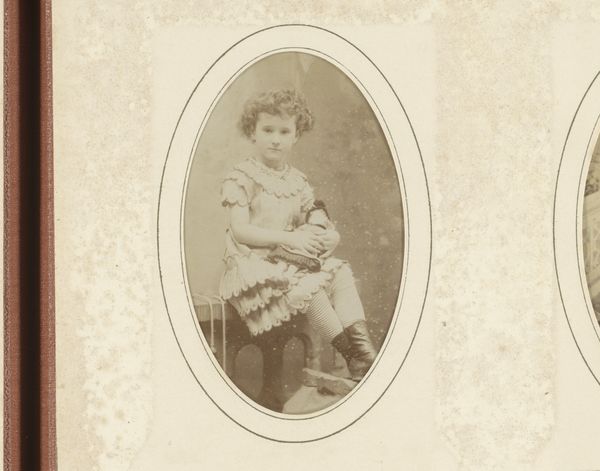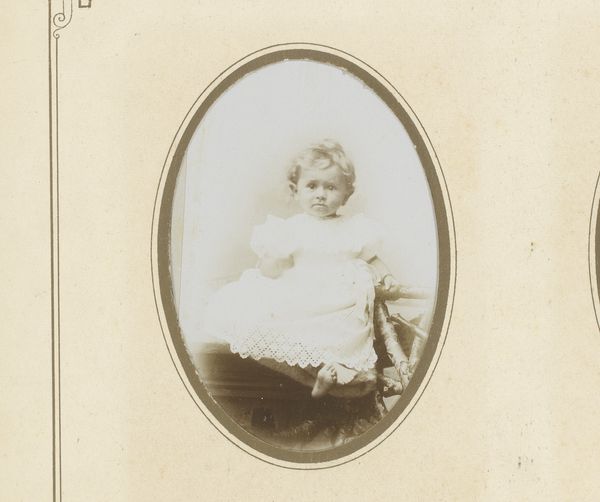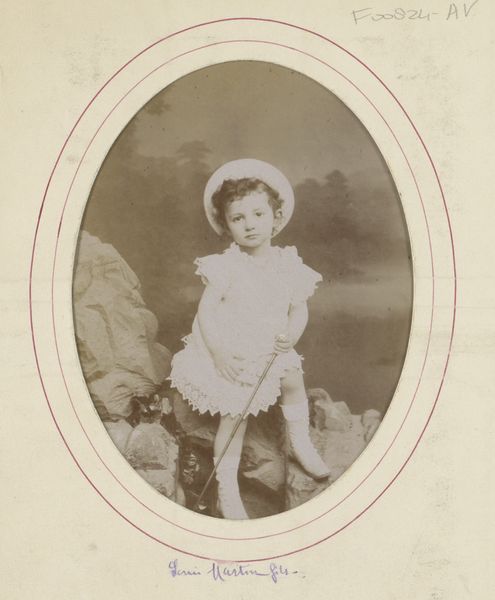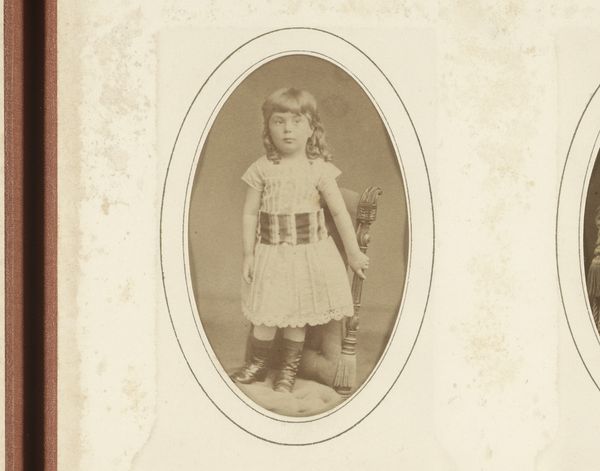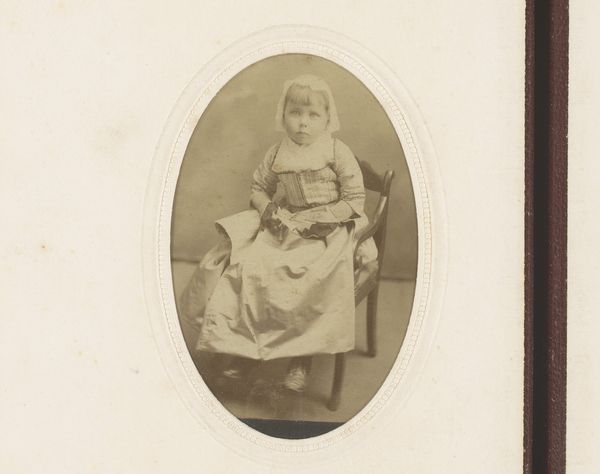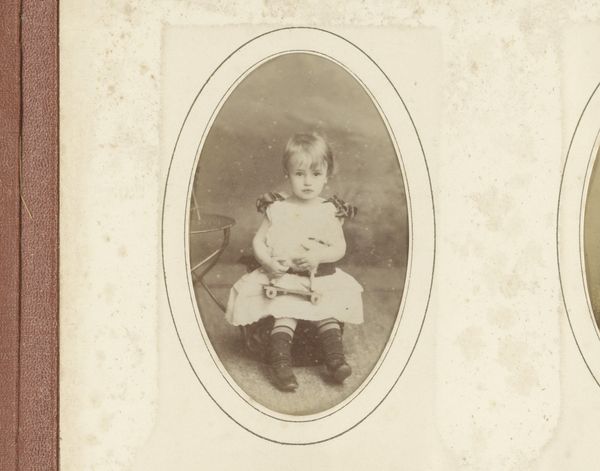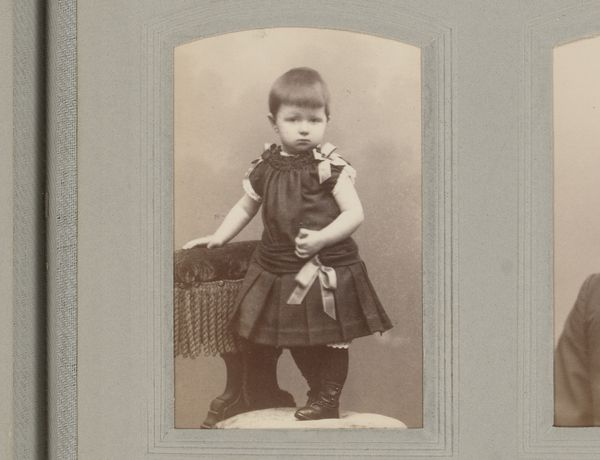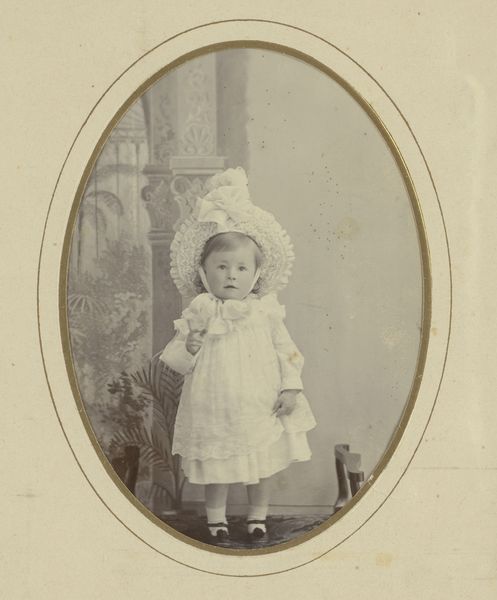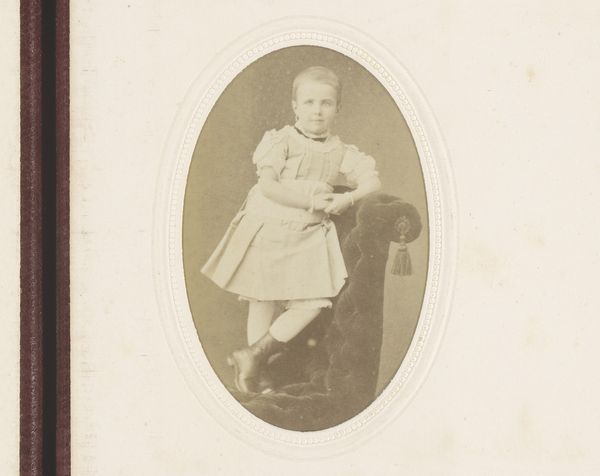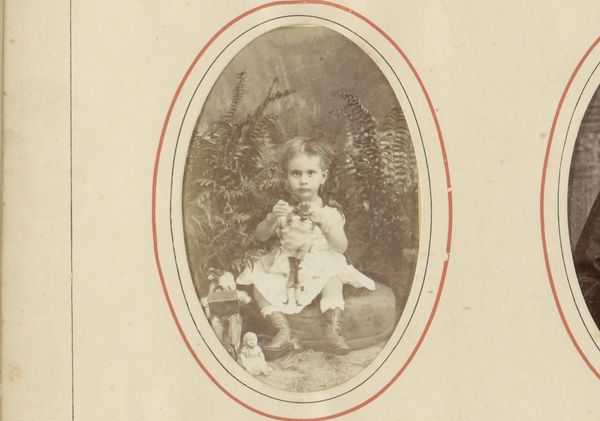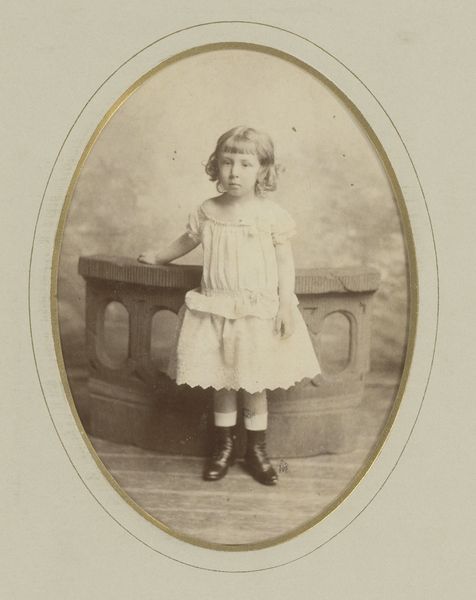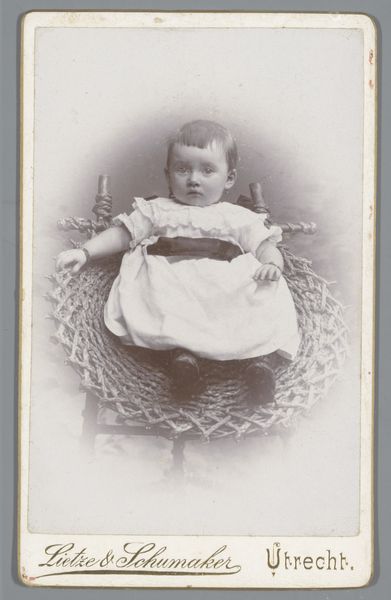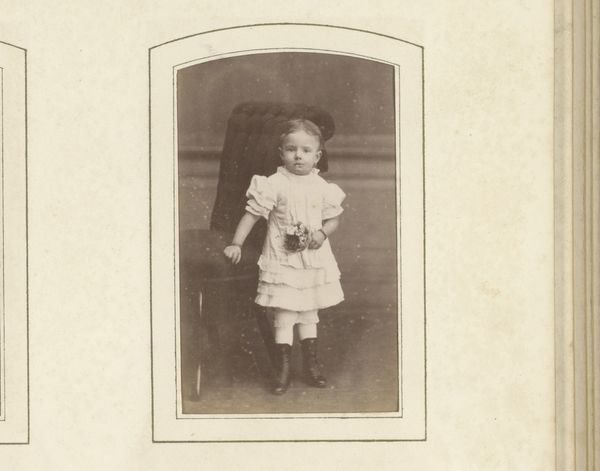
photography
#
portrait
#
photography
#
historical photography
#
19th century
#
genre-painting
Dimensions: height 85 mm, width 52 mm
Copyright: Rijks Museum: Open Domain
Curator: Here we have Friedrich Carel Hisgen’s “Portrait of a Girl, Sitting on a Table,” taken between 1886 and 1887. Editor: My immediate reaction is that the portrait has an uncanny quality. The young girl's expression feels so distant, almost detached. I wonder what the circumstances of its making were. Curator: Given the date and the sepia tone of this albumen print, the sitter likely held that pose for quite some time in front of a bulky camera. Think of what stillness would demand, even from a child, back then! Editor: It must have been grueling, though also transformative for photographic labor as people developed specializations in darkrooms or improved chemical development for shorter sitting times. Curator: Indeed. The stillness underscores her somber expression, a contrast with the rather playful striped stockings and what seems to be a small posy of flowers in her hand. The flowers, almost an offering of youth… It suggests something bittersweet, like the passing of innocence. Editor: And there’s that rather decorative studio backdrop too; a bit theatrical, even artificial, compared to what surely was a challenging environment during photography at that moment in time. The table where the girl is seated; and her simple dress offset a potential grandeur implied by this setting. It points to tensions between performance, craft, and representation within photographic practice itself! Curator: A tension also visible in the composition, wouldn’t you agree? The oval frame feels constricting and almost suffocating, framing her not only visually, but almost trapping her in the memory of a single moment of this studio shot. Editor: Perhaps the shape echoed fashionable lockets or mirrored handheld glass plates being circulated within intimate familial and friend social groups? But those horizontal striations are visually unnerving. Perhaps they emphasize temporality, as well; labor and performance intersecting, frozen in this medium’s potential, revealing class tensions within Dutch bourgeois social life. Curator: It is indeed revealing – a portal into the past reminding us that the most immediate feeling may reflect shared humanity across time, not only differences. Editor: Absolutely. And the very means by which the image was rendered reveals its embedded cultural labor and the power relations it can signify.
Comments
No comments
Be the first to comment and join the conversation on the ultimate creative platform.
